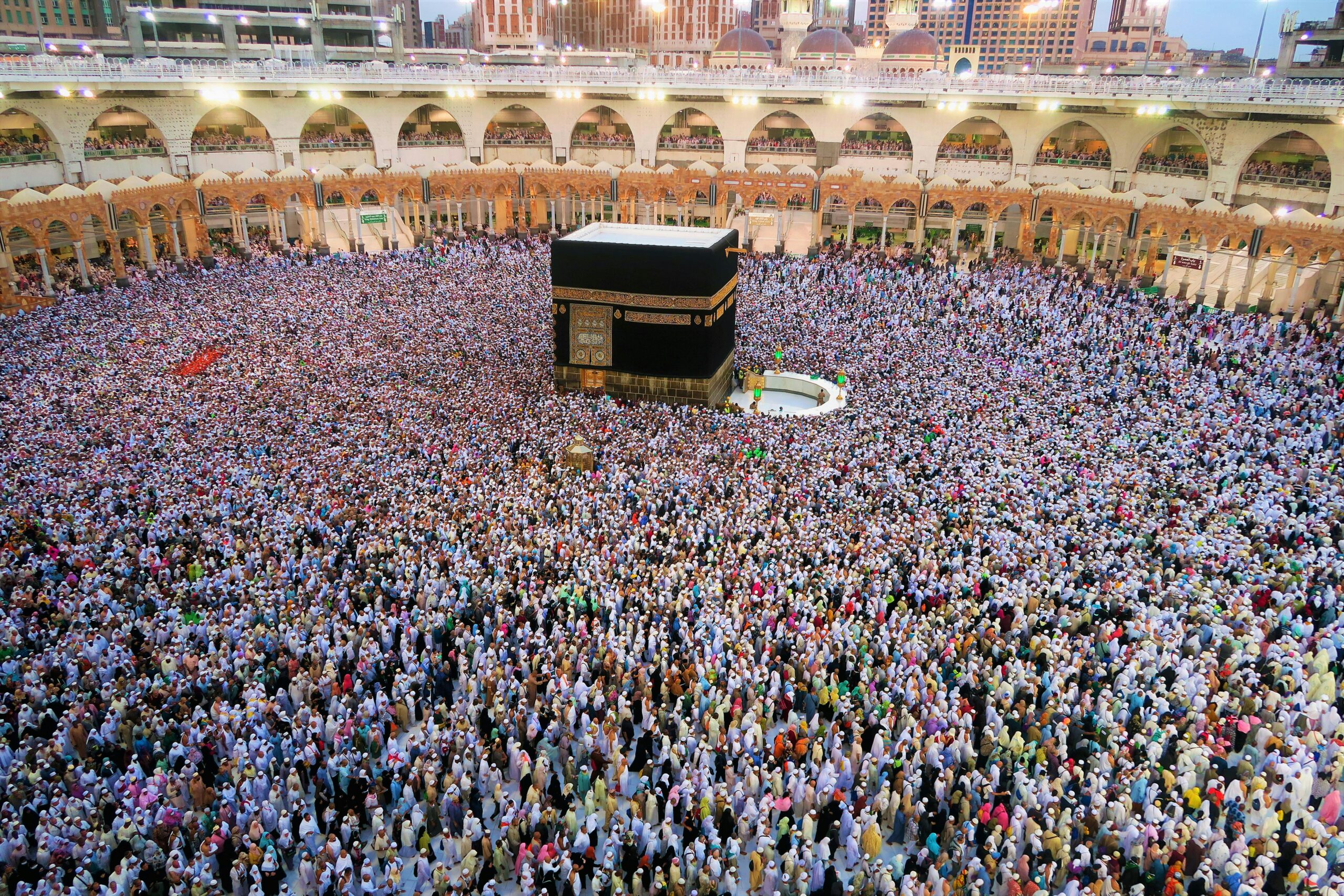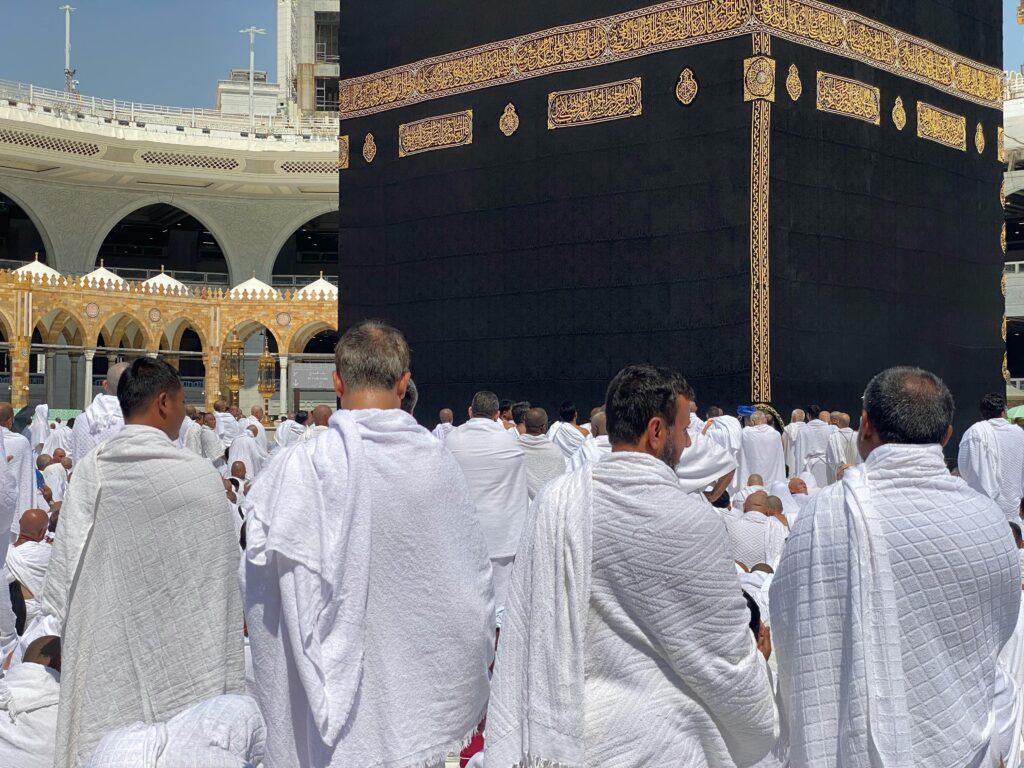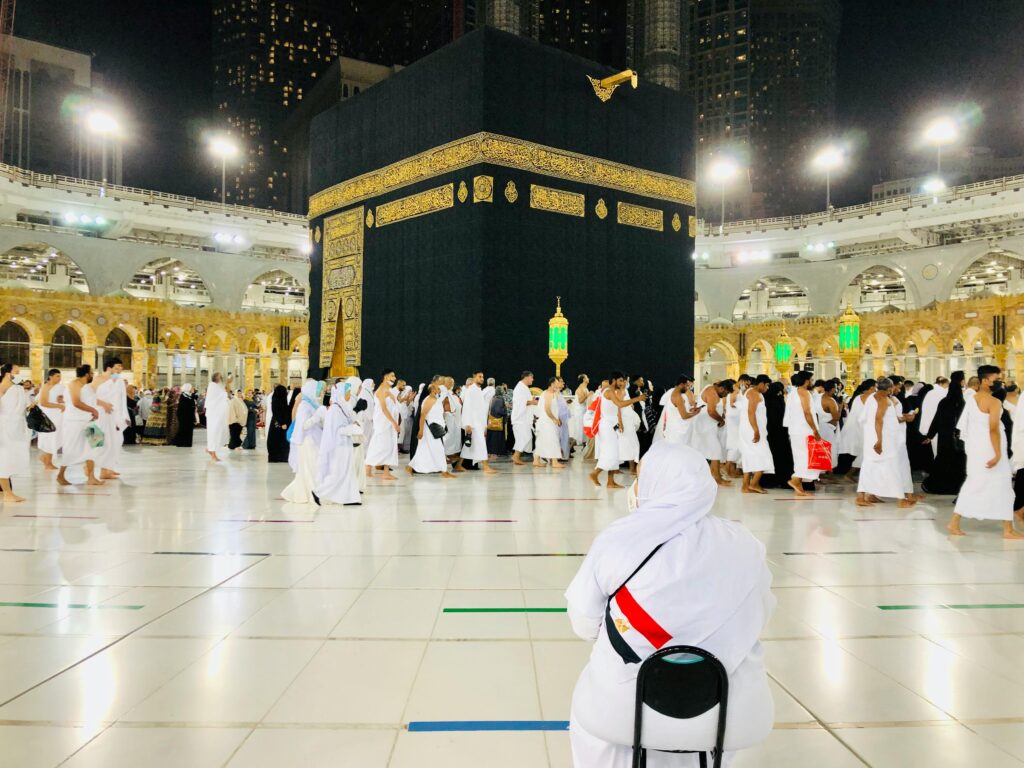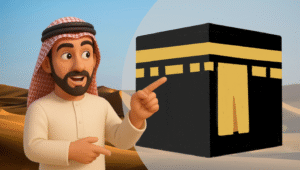
Performing Hajj isn’t just a checklist of rituals, it’s one of the most profound spiritual journeys a Muslim can take. Every step, from donning the Ihram to the farewell Tawaf, carries centuries of history, symbolism, and personal transformation.
But if you’re like many first-timers Hajji, it’s easy to get caught up in logistics and forget why each step matters.
This guide walks you through each Hajj ritual not just in order but with context, purpose, and reflection. Whether you’re preparing to go yourself, supporting a loved one, or just trying to understand what the journey truly entails, let’s unpack it together.
1. Ihram: Entering the Sacred State
When: Before crossing the Miqat (a boundary around Makkah)
Where: Miqat stations vary depending on your country of origin
Ihram, the first Hajj ritual, isn’t just a white garment, it’s a mindset. It’s your moment of intention, where you literally step away from worldly concerns and commit yourself to Allah. You say the words “Labbayk Allahumma Labbayk”, here I am, O Allah and everything changes.
- For men: two unstitched white sheets
- For women: simple, modest clothing (face uncovered)
You’re now in a sacred state where arguments, perfumes, shaving, or even plucking a hair are prohibited. Why? Because it’s about stripping life to its barest form. Just you and your Lord.
Reflection:
Think of Ihram as your spiritual reset button. You begin equal to every other pilgrim — no titles, no status, no distractions.
2. Tawaf al-Qudum: Your First Walk Around the Kaaba
When: Upon entering Masjid al-Haram
Your heart pounds the moment you first see the Kaaba. For many, this is the moment that brings tears. You join thousands circling Allah’s House in harmony, starting from the Black Stone, moving counter-clockwise, seven times.
If you can’t touch or kiss the Hajr-e-Aswad (Black Stone), pointing toward it with your hand is perfectly fine.
Also, stay calm. Crowds can be intense, don’t rush. Allah sees your effort.
Why it matters:
Tawaf reminds us that Allah is the center of our lives, just as the Kaaba is the center of Tawaf. Everything else orbits around Him.

3. Sa’i: Walking Between Safa and Marwah
When: After Tawaf
What it involves: Seven trips between the hills of Safa and Marwah (approx. 3.5 km total)
This act honors Hajar (AS), the wife of Prophet Ibrahim (AS), who desperately searched for water for her son Ismail. The brisk walking between green lights by men reflects her urgency and trust in Allah.
Spiritual takeaway
Sometimes, your biggest breakthroughs come in moments of fear and struggle. Hajar didn’t give up and she was rewarded with Zamzam.
4. Mina: The Tent City
When: 8th Dhul Hijjah
What you do: Stay overnight and pray (shortened prayers)
You head to Mina, a sprawling white tent city (over 100,000 tents) that feels like a campout with the Ummah. It’s quiet compared to what’s ahead. No rituals today beyond prayer, reflection, and preparing your heart for Arafah.
Remember: Use this downtime to hydrate, rest, and write down your dua list for Arafah. This is your chance to think about what you really want to ask Allah.
5. Arafah: The Day of Dua
When: 9th Dhul Hijjah
What you do: Spend the day in supplication, reflection, and humility
This is the pinnacle of Hajj. You’ll stand in the plains of Arafah, where the Prophet ﷺ gave his farewell sermon. From noon until Maghrib, pilgrims gather, some silently crying, some praying, some simply sitting in awe.
Why it’s powerful:
The Prophet ﷺ said, “Hajj is Arafah.” This is the day sins are forgiven. Allah boasts to His angels about His servants standing dusty and tired in devotion.
There are no fancy rituals here. Just you and your duas. Pour your heart out.
Also Read: Essential Hajj Packing Checklist 2025
6. Muzdalifah: Under the Open Sky
When: Night of the 9th Dhul Hijjah
What you do: Pray Maghrib and Isha, sleep outdoors, collect 70 pebbles
You’ll leave Arafah after sunset and head to Muzdalifah. You sleep on bare ground under the stars, no tents. It’s raw, grounding, and strangely peaceful.
Collect your pebbles here (used for the stoning ritual). Don’t overdo it, just 70 is enough.
Remember:
Bring a small mat and blanket. It gets cold at night, and the terrain can be rocky.
7. Eid Day: Stoning, Sacrifice & Shaving
When: 10th Dhul Hijjah (Eid day)
Where: Back in Mina
This day has multiple rituals:
a) Rami al-Jamarat
You’ll throw seven pebbles at the biggest pillar (Jamrat al-Aqabah), symbolizing rejecting Shaytaan, just as Ibrahim (AS) did.
b) Qurbani (Animal Sacrifice)
If you’re doing Hajj al-Tamattu or Qiran, you’ll sacrifice a sheep (or share in a cow/camel). Most people do this through official Hajj apps — you’ll get notified once it’s done.
c) Halq or Taqsir
Men either shave their head (preferred) or trim their hair. Women cut a small portion. This marks your partial exit from Ihram.
Shaving symbolizes humility and rebirth. Take a photo before and after, it’ll remind you how far you’ve come.
Also Read: Affordable Hotels Near Masjid al-Haram
8. Tawaf al-Ifadah
When: Anytime after Eid rituals, ideally same day
What it involves: One more Tawaf + Sa’i (if not done earlier)
This is an essential pillar of Hajj. You return to the Kaaba for another seven rounds, reflecting on all you’ve done. Many consider this their most peaceful Tawaf, the crowds may thin, and you feel more spiritually grounded.

9. Rami (Again): 11th–13th Dhul Hijjah
You return to Mina for 2–3 days to complete the final stoning of Hajj rituals:
- Throw 7 pebbles at each of the 3 Jamarat every day (total 21/day)
- You can leave after 12th Dhul Hijjah if you’re tired — staying till the 13th is Sunnah but optional
Safety note: Avoid peak hours. Go early morning or late evening to avoid heavy crowds and heat.
10. Tawaf al-Wada: The Farewell
Before leaving Makkah, you perform one final Tawaf. No Sa’i this time. It’s your emotional goodbye.
Don’t shop after this, it should be the last Hajj ritual you do in Makkah.
We advise you to do it slowly. Absorb it. Say goodbye like you may never return — but with a prayer that you will.
Final Thoughts
Hajj rituals are a step-by-step transformation. Yes, it’s physically exhausting. But it’s also soul-deep and life-shifting. Every ritual pulls you closer to Allah, and every moment leaves its mark.
So, take this guide not just as a checklist, but as a reminder of what truly matters: intention, humility, and connection with your Creator.



